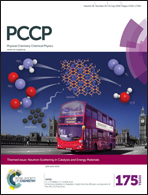Atomic elucidation of the cyclodextrin effects on DDT solubility and biodegradation
Abstract
DDT (1,1,1-trichloro-2.2-bis(p-chlorophenyl)ethane), one of the most abused insecticides, is a highly hazardous component for both human health and environmental applications. The biodegradation of DDT into non-toxic, environmentally benign components is strongly limited by the poor bioavailability of DDT. In this work, we combined experiments and molecular simulations to examine the effect of three cyclodextrins (α-, β-, and γ-CD) on their structure-specific interactions with DDT, specifically in relation to DDT solubility and biodegradability. It was found that all three CDs were able to bind to DDT with their inner hydrophobic cavity and different binding affinities and orientations, demonstrating their ability to improve DDT solubility. Different from the strong binding between DDT and β-/γ-CDs via a fully DDT bury mode, α-CD had a relatively weak binding with DDT via a partial DDT bury mode, which allowed DDT to be readily disassociated from α-CD at the lipid membrane interface, followed by DDT permeation into and across the cell membrane. The different binding modes between DDT and CDs explain why only α-CD can promote the bioavailability and biodegradation of DDT by simultaneously increasing its aqueous solubility and membrane interaction. This work provides structural-based binding information for the further modification and optimization of these three CDs to enhance their solubility and biodegradability of DDT.


 Please wait while we load your content...
Please wait while we load your content...